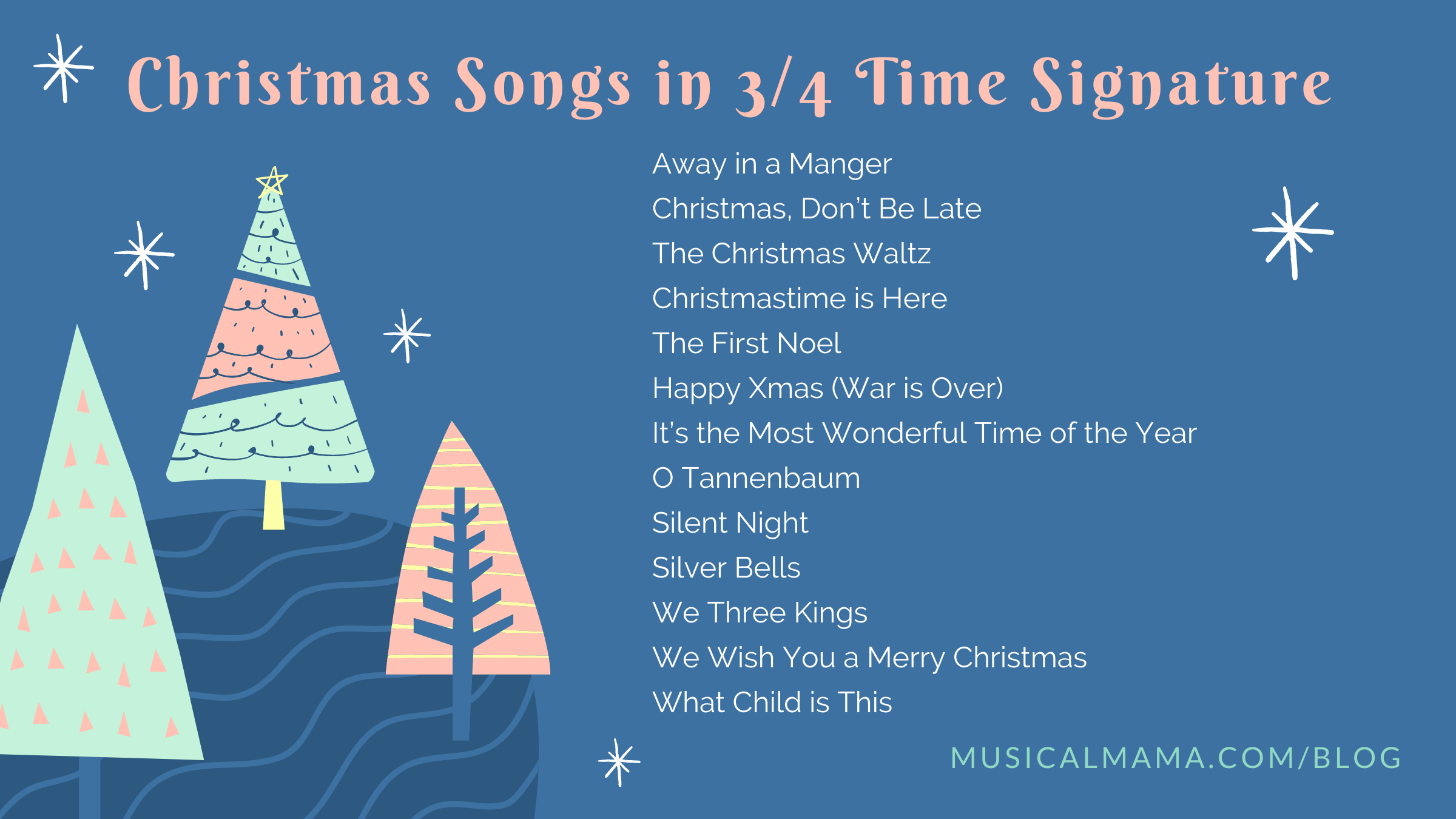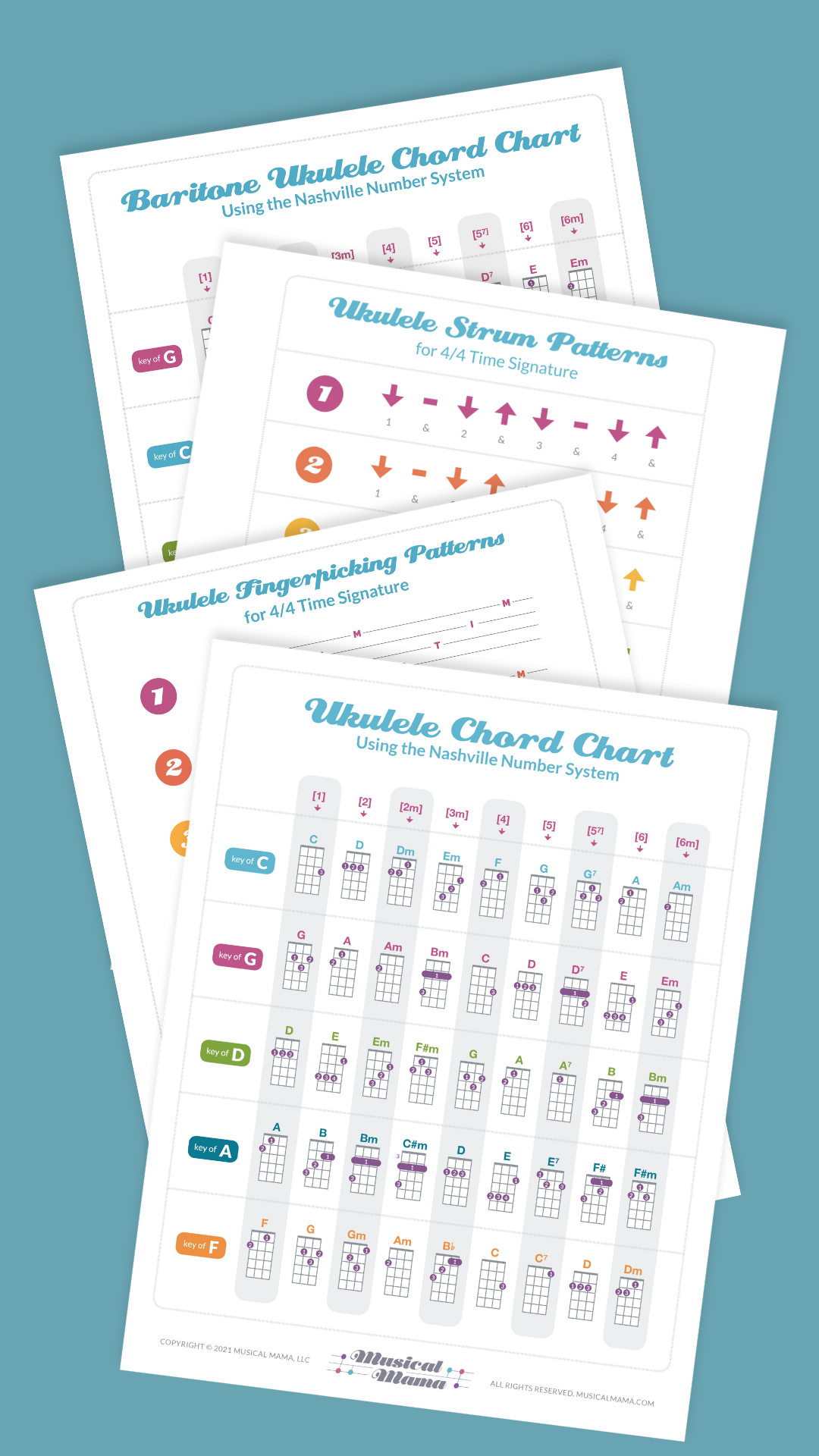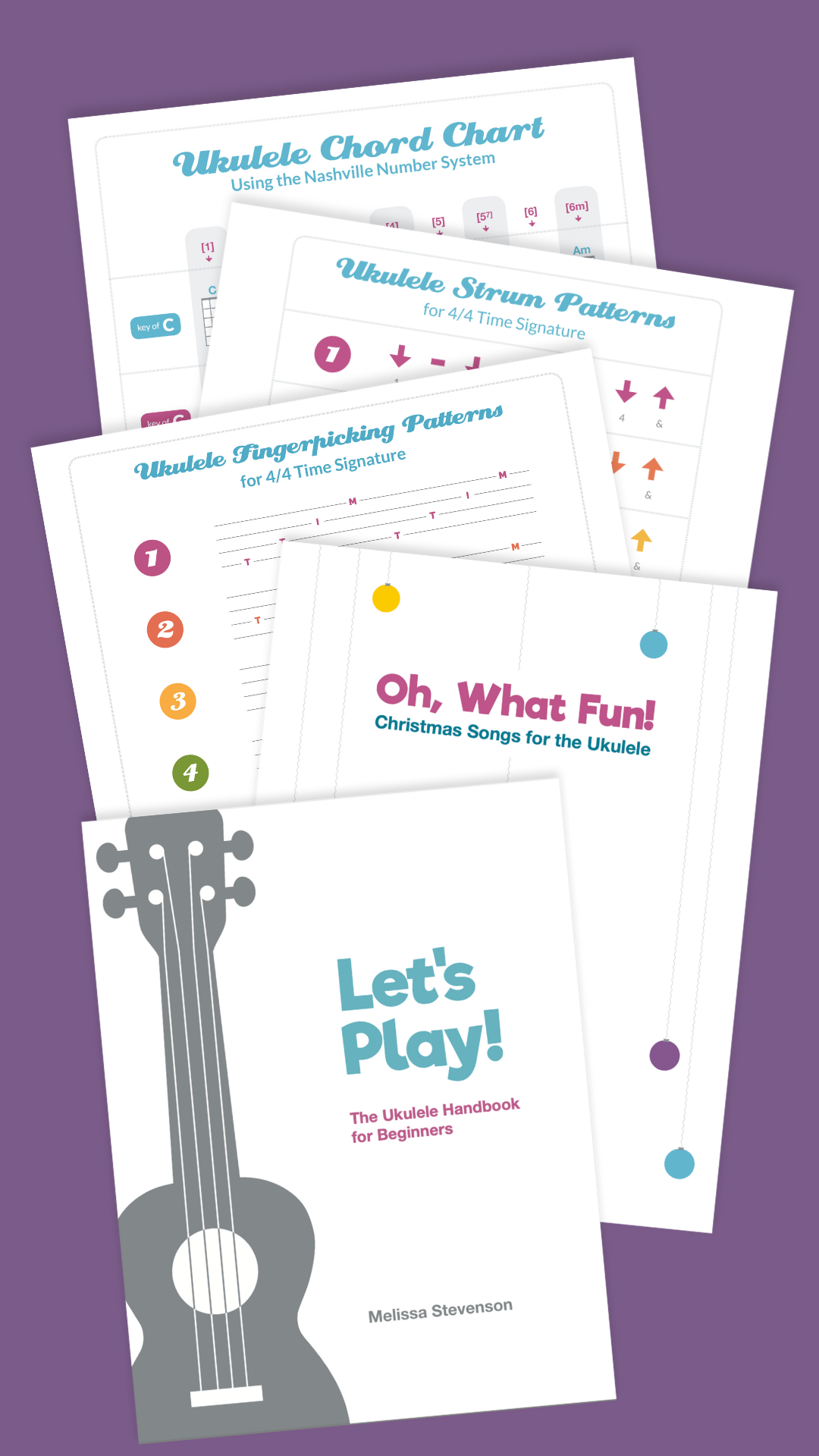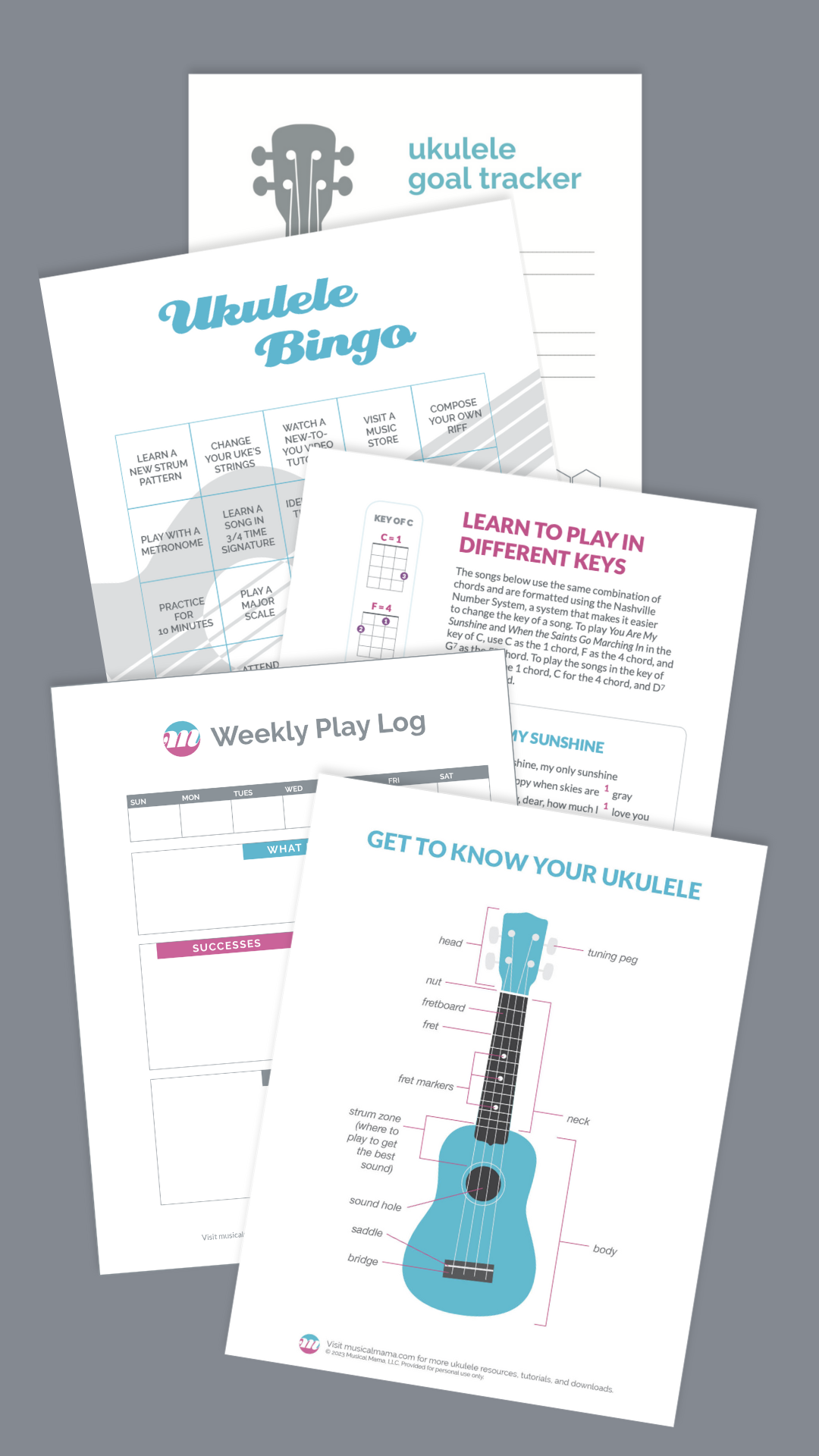Looking for a good gift for a music lover in your life? Musicians can be hard to shop for, so why not a book? Here’s a roundup of books that are either on my own wishlist or books I’ve read recently and recommend:
Read More"I've Got the Joy" and "In My Family's House" — Two Easy Songs You Can Play with Your Kids
Today I have a very easy song to share with you! It uses only two chords, it’s really short, and it has very simple lyrics. I’ll show you how to play it in two different keys, and then I’ll show you how to turn this into a holiday song so you can sing about your own family traditions.
Read MoreSing and Strum "Joy to the World" in Two Different Keys, A Christmas Ukulele Tutorial
One of the things that appeals to me about Christmas music is that it is, essentially, a type of folk music. Each year we hear many of the same songs, and we often have our own favorite versions of those songs. And of course, new versions of those classic carols and pop songs get recorded every year. Today I'm sharing a song that was written three hundred years ago—it’s sung by artists and choirs around the world, and it’s one you may already know by heart.
Read MoreThree Easy Christmas Songs for Beginning Ukulele
Happy holidays! This is a wonderful time of year to be making and sharing music with loved ones, and even brand-new players should be able to join in on the fun. Here are play-along videos for the three easiest songs from my holiday songbook, Oh, What Fun! Christmas Songs for the Ukulele. Play them using just the C, F, and G/G7 chords, then use the guide in the book to learn how to play in different keys.
Ready to start making merry?
Read MoreCute, Cozy, and Practical Gifts for the Ukulele Player in Your Life — My 2020 Holiday Gift Guide
I’m spending so much more time at home these days, and as a result I’ve been looking for ways to make my environment as welcoming as possible. Since coziness and comfort are on my mind, I focused on curating a gift guide that would spark joy and/or make playing your ukulele more convenient or comfortable. I love trying to pick out the perfect gift for my loved ones, and I hope this list helps you find a thoughtful gift for you or your favorite ukulele player. Ready? Let’s get gifting!
Read MoreThe Twelve Days of Christmas — A Four-Chord Christmas Ukulele Play-Along Video for Beginners
Is there a more divisive holiday song than “The Twelve Days of Christmas?” Kids generally love any song that involves counting, and this song is no exception. But many adults feel differently— we go Christmas caroling with a group of neighbors each year and one woman feels so strongly about this song that she insisted we ban it from our set!
“The Twelve Days of Christmas” is an interesting opportunity for anyone looking to get more comfortable with time signatures, as this song switches between 4/4 time and 3/4 time several times. Soon, I’ll post a separate video explaining when those changes occur. But in the meantime, try strumming along with this play-along video! Can you make it all the way to the twelfth day without getting annoyed? 😂
Read MoreSilent Night — Three-Chord Christmas Ukulele Play-Along Video for Beginners
“Silent Night” is another three-chord Christmas song, so it’s quite friendly for even very new ukulele players. Like “The First Noel,” this song is set in 3/4 time and when we play we have to strum and count 1-2-3, 1-2-3. If this is a song you’re familiar with, you already know what it’s supposed to sound like and that can help you intuitively find the rhythm of the song. If Time Signature is a new concept for you, play this song with a very basic down or down/up strum.
Read MoreRudolph, the Red-Nosed Reindeer — A Christmas Ukulele Play-Along Video for Beginners
“Rudolph, the Red-Nosed Reindeer” is a Christmas song that’s beloved by all ages. In this play-along video, I’m strumming the Island Strum with a couple of chucks thrown in. Chucking (sometimes called chunking) is a right-hand technique of muting strings while strumming, adding a rhythmic element to your playing. Chucks are indicated in the strum pattern by an X, so the strum pattern is DOWN - REST - CHUCK - UP - REST - UP - CHUCK - UP. Sounds kind of gross when you say it out loud, doesn’t it? If chucking’s not your thing, play this song with your strum of choice!
Read MoreJoy to the World! — A Three-Chord Christmas Ukulele Play-Along Video for Beginners
“Joy to the World” is probably the easiest song in my Christmas songbook, so if you’re a very new ukulele player, this might be the place to start! I’m playing it in the key of C using the first three chords most beginners learn— C, F, and G7. Because this song only uses three chords, it’s a great candidate for experimenting with playing in different keys. Oh, What Fun! Christmas Songs for the Ukulele includes songs formatted using the Nashville Number System and a chord chart so you can easily transpose (change the key of a song) into five popular keys. After trying it out in a few different keys, I’ve discovered that playing this song in the key of G is a good fit for my natural (and quite average) vocal range. But if you only know C, F, and G7— the three most important chords for the key of C— there are still plenty of songs you can play, and I hope you’ll click play on the video and strum and sing along with me this holiday season.
Read MoreLearn to Play Mele Kalikimaka on the Ukulele — Easy Play-Along Video for Beginners
Is there a better Christmas song for the ukulele than Mele Kalikimaka? The chords are not too bad, so even if you’re a brand new player it’s worth giving it a try! In this video I’m playing it in the key of C with the C, D, F, G, and Am chords and the Island Strum. Give it a go, won’t you?
Read MoreHow to Play We Wish You a Merry Christmas on the Ukulele
Here’s a simple, beginner-friendly ukulele play-along video for the classic Christmas waltz, "We Wish You a Merry Christmas" using one of my favorite strum patterns for songs set in 3/4 time signature. In this video, I’m playing it in the key of C with the following chords: C, D, Em, F, G, Am (please note the fingering for the Em chord at the beginning of the video— it makes it so much easier to play! :)
Read MoreHark! the Herald Angels Sing, a Christmas Ukulele Play-Along Video for Beginners
“Hark! the Herald Angels Sing,” what a jubilant song! There’s a lot of joy to be found in these old hymns, and I particularly love the lyrics— when nowadays do we come across such phrases as “Veiled in flesh the Godhead see” and “Join the triumph of the skies?” I love it, and I hope you have fun singing and strumming along with me.
Read MoreThe First Noel, a Christmas Ukulele Play-Along Video for Beginners
"The First Noel" is another classic Christmas carol set in 3/4 time. Songs in 3/4 time are also referred to as waltzes, and when we play we have to strum and count in sets of three: 1-2-3, 1-2-3. This song is so sweet and gentle that I almost consider it a Christmas lullaby.
Read MoreDeck the Halls, A Very Merry Ukulele Play Along Video
"Deck the Halls" is a Christmas song that is especially fun to sing with children— they love all the fa-la-las! Strum and sing along with me as I play this classic Christmas carol in the key of C using the C, D, F, G, and Am chords and a very basic down-up strum. Play along with me, won’t you?
Read MoreHow to Play O, Come All Ye Faithful - Ukulele Play-Along Video with Strum Pattern, Chords, and Lyrics
O, Come All Ye Faithful is about 300 years old. Did you catch that? THREE. HUNDRED. YEARS. OLD. Its melody is beautiful and feels like a precursor to the songs that came out of Appalachia (one of the places of origin for modern American music). Perhaps that’s the reason why I tend to prefer more stripped down interpretations of this song and/or have a country twang to them. Whatever the reason, it’s a fun one to sing and strum. Enjoy!
If you enjoyed this video, please consider buying my Christmas songbook or my how-to book, Let’s Play! The Ukulele Handbook for Beginners (both are available in digital download and paperback formats). Your support makes it possible for me to share high-value content for uke players for free here on the blog. Thank you, and happy strumming!
How to Play Blue Christmas on the Ukulele (with Play-Along Video)
True facts: I once dressed up as Elvis for Halloween (in my early 20s), I once road-tripped to Graceland by myself (also in my 20s), and I even had an Elvis lunch box once upon a time. You might say I’m a fan of his (you’d be right). In this video I contain my impulse to do an Elvis impersation as I sing his hit, Blue Christmas. I’ve paired it here with a strum that incorporates rests (down-rest-down-up-rest-up-down-up). If that strum’s not in your toolbox yet, just strum down-up-down-up.
If you’ve been watching the other Christmas videos I’ve posted, you may notice that these songs have something in common: they’re all arranged in the key of C. If you were performing for an audience, you probably wouldn’t want to play your entire set in one key because things would start to sound a little repetitive but for hobbyists, spending time with one key can make a lot of sense. The more you play in the key of C (or any key, for that matter), you’ll start to notice that some chords keep appearing over and over, revealing some of the patterns in popular music. You’ll also train your ear to hear the relationship of the chords within a song, and that helps you lay the groundwork for playing songs by ear. The key of C is the easiest key to play on the uke, so it’s the friendliest key for beginner’s to start playing in. My ukulele handbook for beginners and my Christmas songbook include guides for transposing songs into different keys.
Related link: How to Figure Out the Key of a Song
Happy strumming!
How to Play Away in a Manger on the Ukulele (Easy Three-Chord Song with Play-Along Video)
As we get closer and closer to Christmas, I am sharing some play-along videos of songs included in my new book, Oh, What Fun! Christmas Songs for Ukulele. Yesterday I shared the upbeat, jaunty tune of Jingle Bells, and tonight I’m sharing a dreamy waltz: Away in a Manger. Away in a Manger is in 3/4 time signature. and that means we have to strum (and count) in sets of three. You may find that you’re so familiar with this song that the rhythm comes naturally to you, but if it doesn’t these video posts can help explain things:
If you enjoyed this video, please give it a like and subscribe to my Youtube channel. And please consider buying my Christmas songbook (available as a digital download and paperback). Your support makes it possible for me to share high-value content for uke players for free here on the blog. Thank you, and happy strumming!
How to Play Jingle Bells on the Ukulele (with play-along video)
Did you know I wrote a Christmas songbook? It’s called Oh, What Fun! and it includes the chords and lyrics for thirteen popular holiday songs. I’m currently working on recording, editing, and uploading play-along videos for every song in the book, and thought I’d share some of the videos here on the blog on the days leading up to Christmas. All of these play-along videos are formatted with the chords and strum pattern shown at the beginning of the video, and as I play you’ll see the chords and lyrics big and bright on the right-hand side of the video.
Jingle Bells is a song almost everyone knows, and that makes it an ideal song to strum and sing with others! Play along with me, won’t you?
PS: You can adjust the speed of the video by clicking on the Settings icon, then clicking on Speed. If you’re a beginning uke player, you may want to slow it down to .75 or .5 speed. Happy strumming!
A List of Christmas Songs Set in 3/4 Time Signature
If you’re looking up chords and lyrics online, or playing along with YouTube tutorials, you may find that the time signature of a song is not mentioned. If you’re having a hard time figuring it out on your own, check out my Feeling the Difference Between 4/4 and 3/4 Time Signature, which will show you how to feel the difference between the two most popular time signatures. And in my post from yesterday, I included another video tutorial with three beginner strum patterns for playing in 3/4 time (commonly referred to as waltz rhythm).
Read MoreHow to Strum Songs Set in 3/4 Time Signature (With Video Tutorial!)
This post excerpts content from Let’s Play! The Ukulele Handbook for Beginners.
Let’s begin by defining some basic music terms:
Time Signature
A symbol used in sheet music to indicate the number of beats per measure of music. A song’s time signature determines which strum patterns you can play.
Measure
One unit of music; one grouping of beats
4/4 Time Signature
The most common time signature for Western music. A song in 4/4 time has four beats per measure and is counted 1 - 2 - 3 - 4, 1 - 2 - 3 - 4 . . . 4/4 (“four-four”) time is also referred to as common time because it is the default time signature for pop, rock, R&B, hip-hop, country, folk, etc. 4/4 time is the time signature you are most accustomed to hearing and, as a beginning musician, it’s the time signature you are most likely to be playing.
3/4 Time Signature
The second most common time signature for Western music. A song in 3/4 time has three beats per measure and is counted 1 - 2 - 3, 1 - 2 - 3 . . . 3/4 (“three-four”) time signature is the second most popular time signature for Western music and is frequently referred to as waltz rhythm. When we play in 3/4 time, we count in groups of three (not four), meaning we must alter our strum to suit the rhythm.
In the following video, I play through three beginner waltz strums:
Your primary goal in making music is to maintain a steady beat. Start with variation A to create a nice, basic rhythm as you familiarize yourself with the new count. When you’re keeping a steady beat and appropriately managing your chord changes, give variations B and C a try.
One of my favorite things to do is simplify music theory to make it easier to understand, and I hope this post has helped simplify time signatures for some of you! If you’d like to learn more, check out my book, Let’s Play! The Ukulele Handbook for Beginners. Happy strumming!








